There are over 20,000 overpasses and bridges throughout Minnesota, but Old St. Anne’s Pass is (probably) the only one that’s a portal to the supernatural world.
That’s according to Dan Becker, the late Stearns County man who convinced the Minnesota legislature to name Old St. Anne’s Pass in 2001. The overpass is named for a church and Becker family cemetery that once stood just north of its current location—a church that was the cornerstone of an elaborate mythos only Becker and his ancestors purportedly knew. After naming it, he spent the next two decades writing dozens of short books on the bridge, his own life, and the histories of Stearns County and beyond.
Becker wrote that “prior to the man made bridge, souls used a spiritual gate that had been created along the blessed cemetery and church land.” This spiritual gate existed until 1865, when God used “a violation of the seal of confession . . . to guide the Devil away from the American Civil War to an unpopulated open plane area of the world in preparation for The Battle of Souls.”
That open plane area of the world? Southern Stearns County.
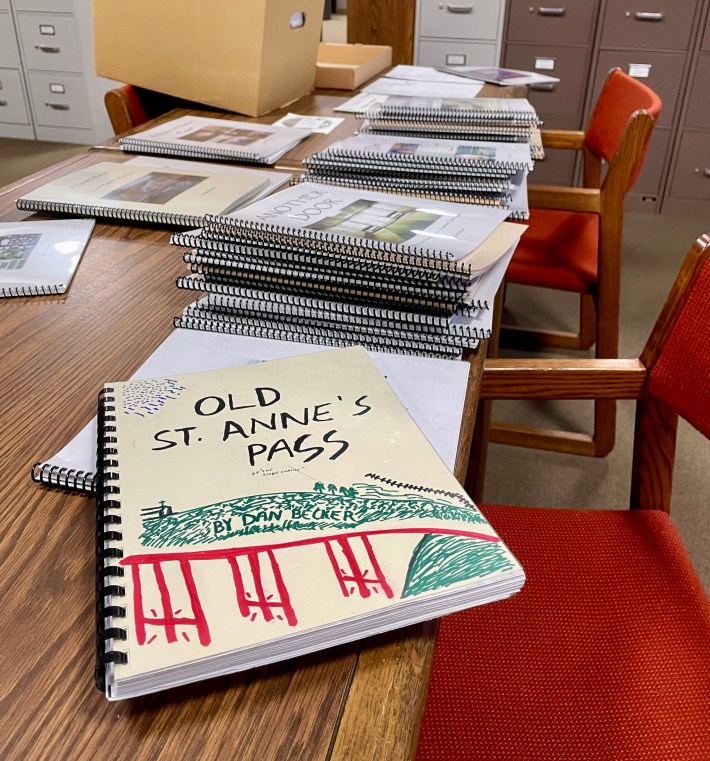
According to Becker, the forces of good eventually triumphed after a massive angel-versus-demon battle during the 1940 Armistice Day Blizzard. In his first book, 2003’s Old St. Anne’s Pass of the Stone Chalice, he wrote it was “Old St. Anne’s Pass that would lock out an entity force of the Devil and that forgiveness would become the ultimate cornerstone of victory... and since 1940 lost demonic forces with a desire to change can also seek forgiveness at the gate now known as ‘Old St. Anne’s Pass.’”
You absolutely wouldn’t know any of this to look at the overpass. Old St. Anne’s Pass is a nondescript portion of Hwy. 55 that crosses over the Soo Line railroad, halfway between the towns of Kimball and Watkins. Other than the small brown signs at either end of the bridge that say “Old St. Anne’s Pass,” it’s like countless other Minnesota overpasses: poured concrete pilings, the occasional Canadian Pacific train chugging underneath, and cars and farm trucks zipping overhead at 50 miles an hour.
Becker’s efforts to name the overpass, and dedication to chronicling its true, secret history, line up with the 2000 sale of the farmland the church once stood on. The tiny graveyard still existed, holding the remains of Becker family ancestors, but was overrun with weeds and in disrepair. Becker insisted to the new owners he had a right to access the graveyard. He found granite markers to replace missing graves, weeded, and relocated soil and earth from the cemetery to one in Kimball.
(Most scientists and scholars, as well as the author of this article and your trusted Racket editors, would say that this history is neither true nor necessarily a secret.)
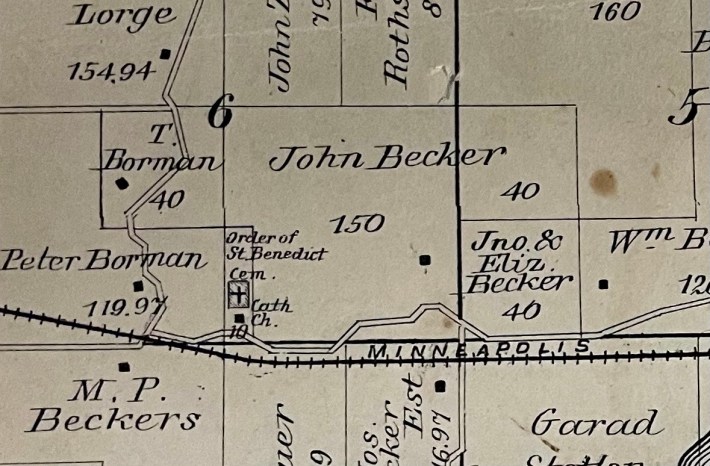
His perhaps over-enthusiastic and continued visits caused a conflict with the new owners, Ron and Connie Fick, who wanted him off their property, though they eventually agreed Becker could visit the graveyard only once every two years.
Prevented from regularly accessing the land and unable to honor the graves, Becker did the next best thing: He got the state legislature to name the overpass. The church was actually named St. Anna's, and it had been destroyed by a tornado in 1894; Becker explained the discrepancy away as the church having different names depending on which priest conducted services.
Naming a portion of roadway isn’t particularly onerous, and operates like any other bill. Once approved, someone other than the state needs to pay for the signage and installation. For Old St Anne’s Pass, Becker picked up the costs.
But the name and signs would only be the beginning, and there’s no hint of the supernatural in the brief law designating the bridge as one of Minnesota’s named roadways.
“By having that name, I don’t know if anyone will be able to see it and relate to the history of that area,” Becker told the St. Cloud Times in 2001. “But if it's on the books, someone would be able to go and look it up.”
And it’s Becker’s books—59 of which are in the Stearns County Museum—that tell his version of history and the source of the overpass’s name (with additional material on the website he ran named after the overpass).
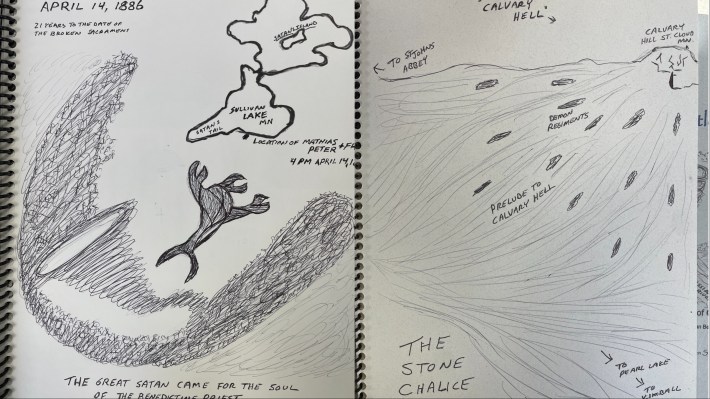
Starting in 2003, Becker handmade 75 short books “spiritually connected” to Old St. Anne’s Pass. Becker said his books were from “the Old St. Anne's Pass’s point of view,” which was “that good and evil are everywhere, signs and symbols mean something.”
Stored in a box in the museum's archives, Becker’s books are spiral bound, printed on stock paper, and illustrated with pictures, drawings, and scanned documents interspersed with his typed text. Varying in length from 20 to 100 pages, he’d make four to 10 copies of a book, giving them to museums, family, and friends. The books mix historical fact, family folklore, and research obtained from Becker’s self-described “charismatic spiritual journeys.”
In 2014 he wrote to the Stearns County Museum that “[t]o document the true history of Old St. Anne's Pass, there was only one option and that was to document charismatic spiritual journeys.” He said most publications, “generally do not print stories based on these journeys because spiritual evidence doesn’t show up well on paper.”
“No two spiritual journeys followed the same set of rules or guidelines,” Becker wrote in 2008’s Searching for Saints. They could be cinematic visions, as in 2003’s The Battle of Souls, where, “we rise ourselves high enough above the Stone Chalice to comprehend its size. A time lapse vision shows us souls from around the globe pouring into it over the next 48 years. Mixed into these visions are images of evil acts around the globe happening at the same time.”
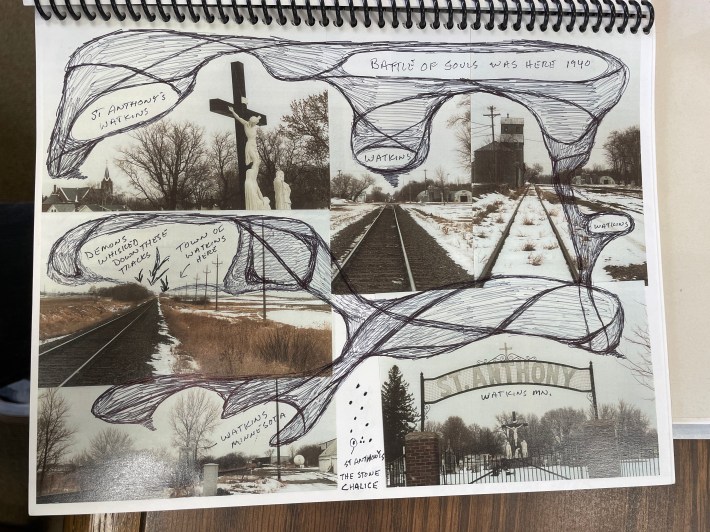
As Becker shifted his writing from Old St. Anne’s Pass’s to broader explorations of local and global history, his spiritual journeys also changed.
In 2012’s Secrets of the Balkans, exploring the Czech history of WWI, Becker’s spiritual journey meant that “among other individuals, the author [Becker] was a passerby, a gardener of a palace, a driver of a salon car, a single soldier on a battlefield of thousands, and a guard in the doorway of a fortress.” In other instances, supernatural figures visited Becker. In Snap, also from 2012, the spirit of Gordon Wheeler came to Becker to tell his side of a tragic story: Wheeler was the owner of a porn shop who police shot to death after he took the Little Falls city council hostage in 2008. Becker transcribed the conversation they had while seated in rocking chairs inside his home.
The journeys could be a collage of memories and visions, like in 2010’s Chosen, where Becker processed his divorce and his battle with a brain tumor. This tumor eventually forced him to retire from writing in 2019, and he died in April of 2023.
From when he lost access to the graveyard up to his retirement, Becker continued to write the Old St Anne’s Pass version of history. He created a landmark designation for the overpass on Google Maps, linking to his website and including pictures of his ancestors and their graves. The narrative and history of the overpass survives Dan Becker and entered into Minnesota’s historical reality, now existing online, in museum archives, and in state law.
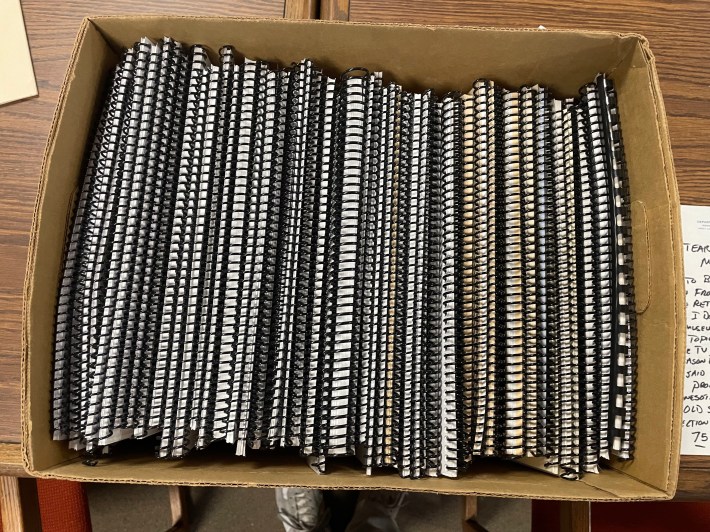
Becker was never entirely clear on what he did and did not believe to be true, and how much, if any, of his work was connected to or impacted by his illness. He told the St. Cloud State University Chronicle in 2012 that his writing started out “with family history” and that “true or not it was worth writing." He was also proudly defiant of its atypicality, writing in one book, “this is not a case of insanity, but well protected history.”
Six months before his death, in what may be the last thing he ever published, Becker wrote in the Tri-County News that “once in a while, there is an individual who disagrees with how my family story has been written. I tell each person the same thing: 'Write your own story!'"







